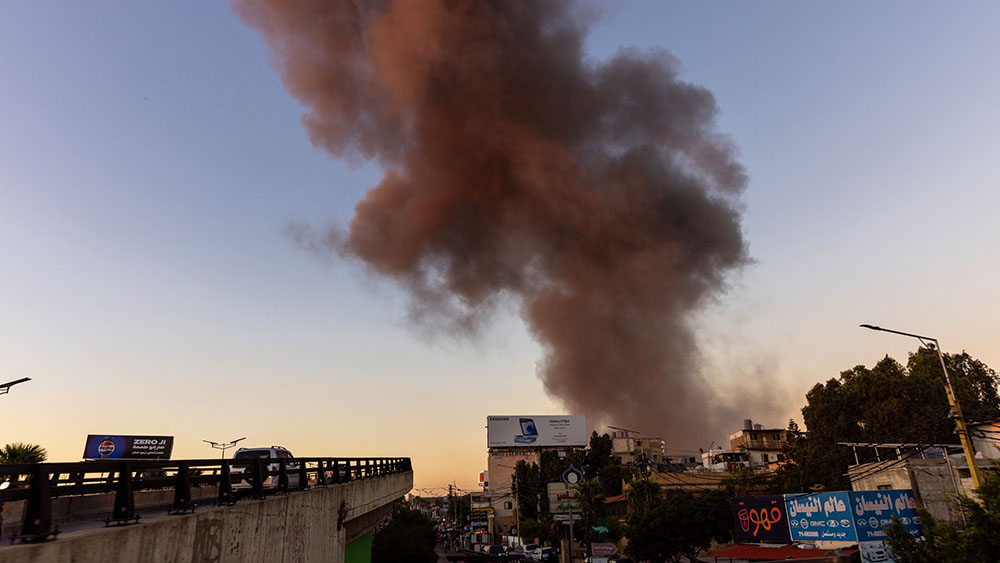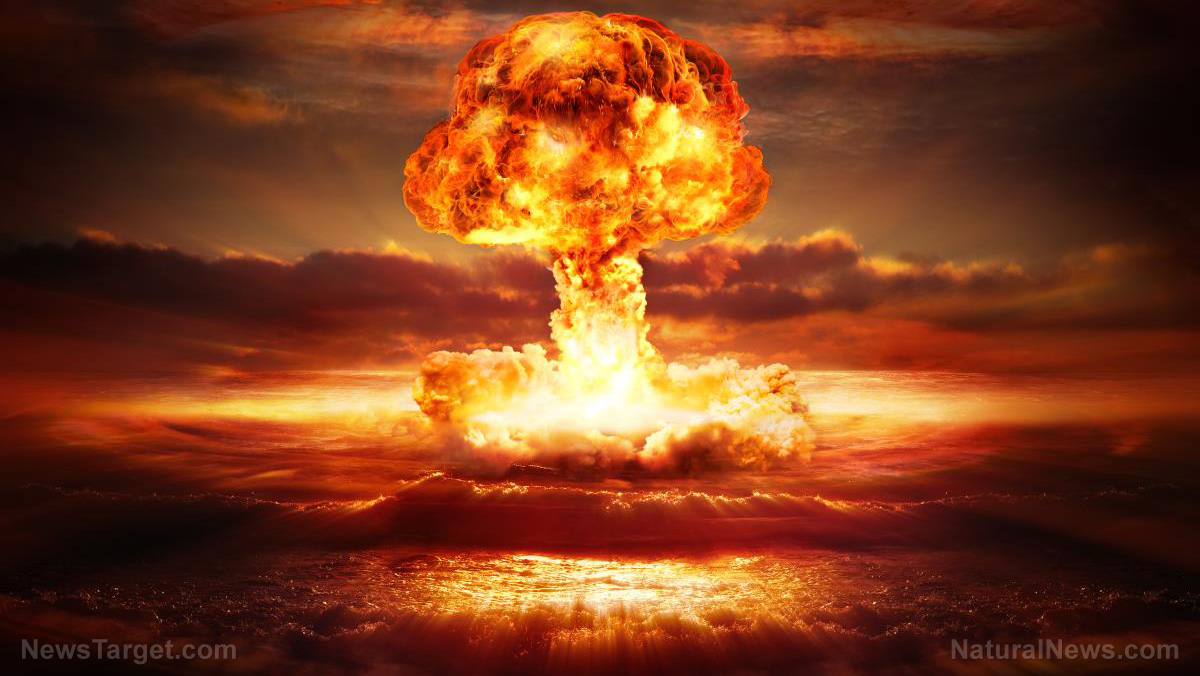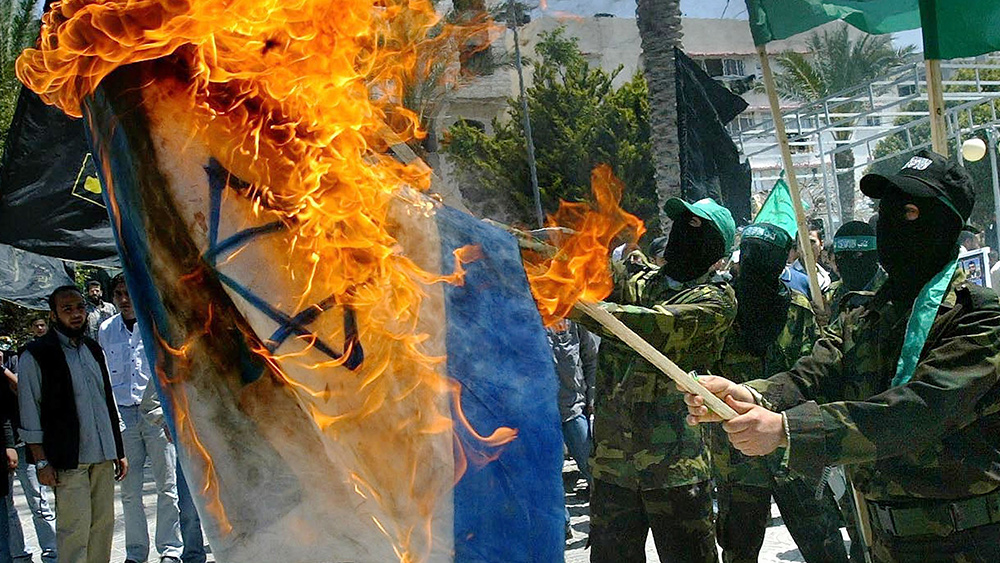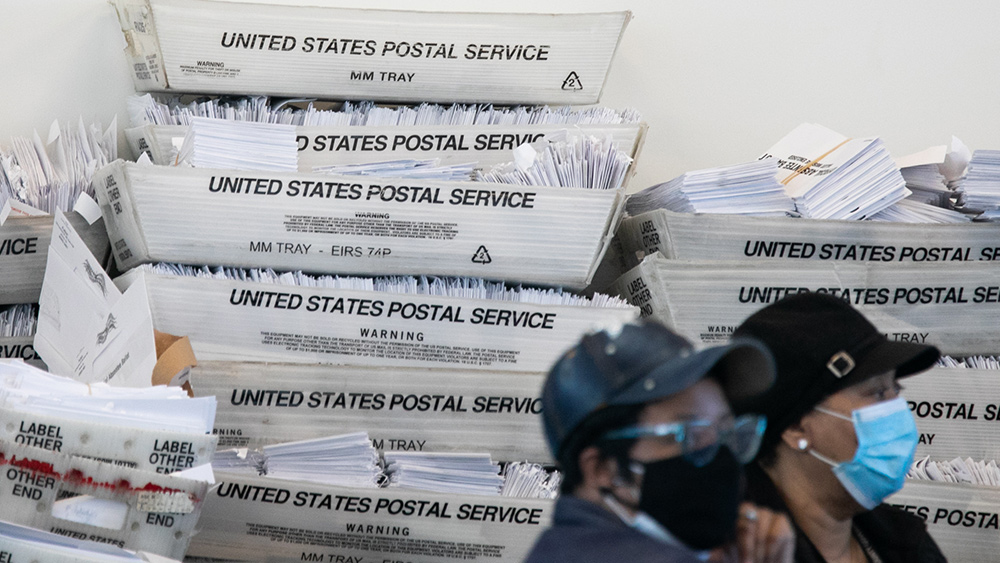Israeli airbase sustains extensive damage from Iranian missile strikes, but Israel is censoring reports on the damage
By isabelle // 2024-10-04
Tweet
Share
Copy

Iran’s recent attack on Israel, which saw nearly 200 missiles being lobbed at the country in retaliation for the assassination of Hezbollah leader Hassan Nasrallah in Beirut, is largely being framed in the media as a failure. According to their narrative, Israel managed to intercept most of the missiles and the population was largely spared.
However, satellite images tell a different story, with Israel’s Nevatim airbase in the Negev desert apparently being hit hard by ballistic missiles from Iran.
The imagery, which was released by the AP, showed a large hole in the base’s aircraft hangar as well as a crater on one of its runways. The base houses Israel’s F-35 fighter jets.
Iran claims that 90 percent of the missiles it sent hit their targets after being fired in successive waves, but Israel has been doing its best to cover up the damage. Although the IDF did eventually admit that some of their air force bases were impacted, they specified that no aircraft, troops or weapons were hit. However, the entire topic is the subject of heavy military censorship.
For example, when the Wall Street Journal asked the IDF about an initial assessment by the Israeli army that the damage was only minor, they refused to provide further details on the grounds that they “didn’t want to give information to Iran” about the extent of the damage.
Israel has also closed off a number of military zones and barred reporting on where Iranian missiles hit the ground.
However, some Hezbollah sources have claimed that they put the Hatzerim, Nevatim and Ramon airbases out of service with their missile strikes.
Speaking to Al Jazeera, one senior Hezbollah source claimed: “Most of the bases targeted by Iran in Israel were hit directly, especially the airbases. Most of the objectives of the strike were achieved according to the set plan. Nevatim, Hatzerim, Tel Nof, Netzarim and Glilot bases were targeted. The scale of Israeli missile interception was weak. It has been confirmed that there were significant casualties among Israeli soldiers.”
The Wall Street Journal did report that two fallen missiles from Iran were found near the Dead Sea close to Dimona, which is the location of Israel’s nuclear facilities, although it is not known if they fell there or were shot down.
In addition, a missile hit a road just outside of the headquarters of Israel’s Mossad foreign intelligence service near Tel Aviv. Another strike damaged around 100 houses in a town to the north of Tel Aviv.
U.S. hopes Israel's response won't include targeting Iranian nuclear sites
Israeli Prime Minister Benjamin Netanyahu vowed a response to the attack, saying it was a “big mistake.” Many current and former Israeli officials have been demanding an aggressive response, with some, including former Israeli Prime Minister Naftali Bennett, calling for attacks on Iran’s nuclear program. Bennett wrote on X: “Israel has now its greatest opportunity in 50 years, to change the face of the Middle East.” However, such an attack would risk alienating one of Israel’s strongest supporters. On Wednesday, President Biden said that he would not support Israel attacking Iranian nuclear sites and that their response to Iran must be proportional. Although an assessment by the administration concluded that it was unlikely Israel would go after Iranian nuclear sites right now, it is believed that they have yet to decide where they will strike, so nothing is off the table. If they do take such a bold action, it will certainly lead to a dramatic escalation that could encompass numerous other countries. Sources for this article include: TheCradle.co WSJ.com CNN.comTweet
Share
Copy
Tagged Under:
collapse Iran national security prophecy Israel missiles censorship big government Hezbollah chaos WWIII suppressed airbase fallout retaliation military tech weapons technology Holy War
You Might Also Like
Survey: 80% of Americans are concerned about WWIII
By Richard Brown // Share
Seized Hamas documents reveal extensive plot for large-scale attacks on Israel with Iranian support
By Richard Brown // Share
Recent News
Archaeologists uncover vast prehistoric pit circle from the Neolithic era near Stonehenge
By kevinhughes // Share











